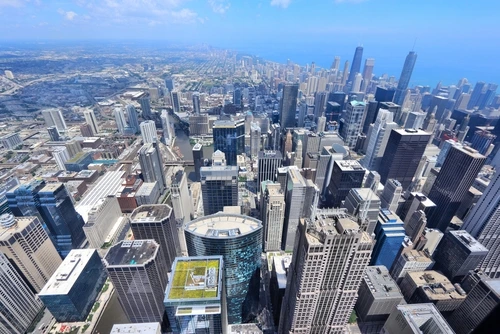
A study conducted in the city of Chicago has shed light on a previously unknown hazard lurking beneath urban areas: subsurface heat islands. These hidden underground climate changes pose a serious risk to the environment, public health, and transportation systems. The research, centred around the city’s Chicago Loop district, highlights the urgent need to address the impact of rising ground temperatures on civil infrastructure in urban planning strategies.

The study, The silent impact of underground climate change on civil infrastructure, led by a team of scientists and engineers, employed advanced 3D computer modelling and temperature sensors to examine the ground temperature variations, deformations, and displacements caused by subsurface heat islands.
“Underground climate change is a silent hazard,” Northwestern University’s Alessandro Rotta Loria, who led the study, told USA Today. “The ground is deforming as a result of temperature variations, and no existing civil structure or infrastructure is designed to withstand these variations.”
The findings were alarming, revealing significant deformations and displacements that have the potential to jeopardise the operational requirements of civil structures. Without proper consideration of these underground climate changes, buildings and infrastructures in densely populated areas like the Chicago Loop could be at risk of structural damage and malfunction.
Are heat islands to blame for sinking cities?
The research team emphasised the importance of integrating the impact of underground climate change into future urban planning strategies. By proactively addressing this silent threat, cities can safeguard their infrastructure and protect the well-being of their residents. The study’s results suggest that by accounting for rising ground temperatures, planners can avoid potential damage and disruption to essential services like public transportation.
Furthermore, the study uncovered a glimmer of hope amidst the concern. It revealed that subsurface heat islands also present an opportunity to harness or minimise waste heat in the ground. By implementing innovative geothermal technologies, cities can repurpose this excess heat for various purposes, including heating buildings and powering energy networks.
Such measures not only mitigate the adverse effects of underground climate change but also contribute to the decarbonisation and sustainability of urban areas.
The implications of this research extend far beyond the Chicago Loop, reaching urban areas worldwide. The study is seen as a wake-up call to city planners, urging them to consider the often-overlooked underground climate change phenomenon and avoid a new one, sinking cities.
By incorporating these findings into future urban planning strategies, cities can proactively protect their infrastructure, enhance resilience, and seize the opportunity to harness sustainable energy sources.
The implications of this study are far-reaching and call for further investigations at the intersection of urban science, mechanics and energy. By advancing our understanding of subsurface heat islands and their impact on urban infrastructure, scientists and engineers can contribute to the development of more effective urban planning strategies, according to the study.
[Read more: How decades of flooding prompted the ‘new’ Jakarta move]






